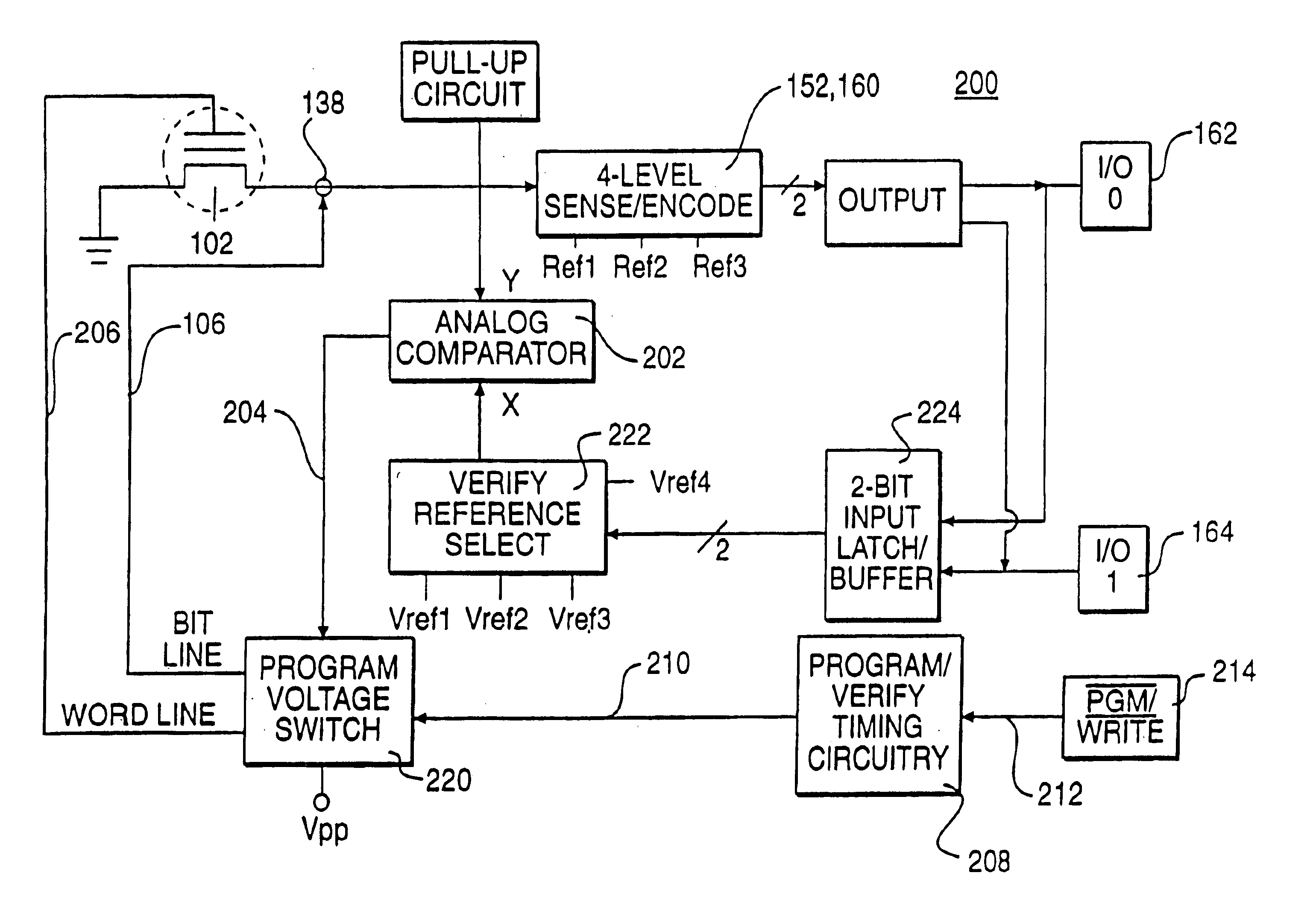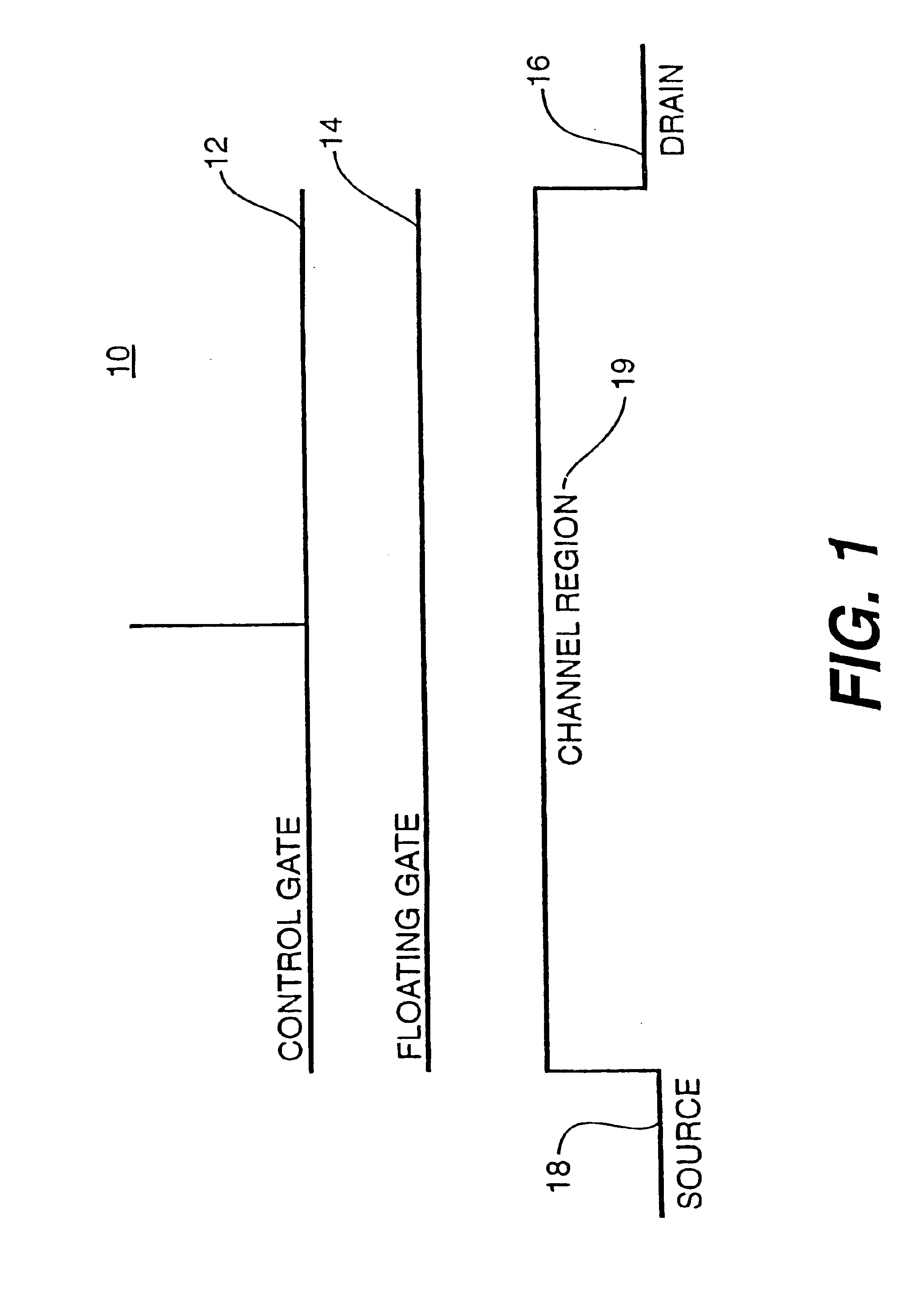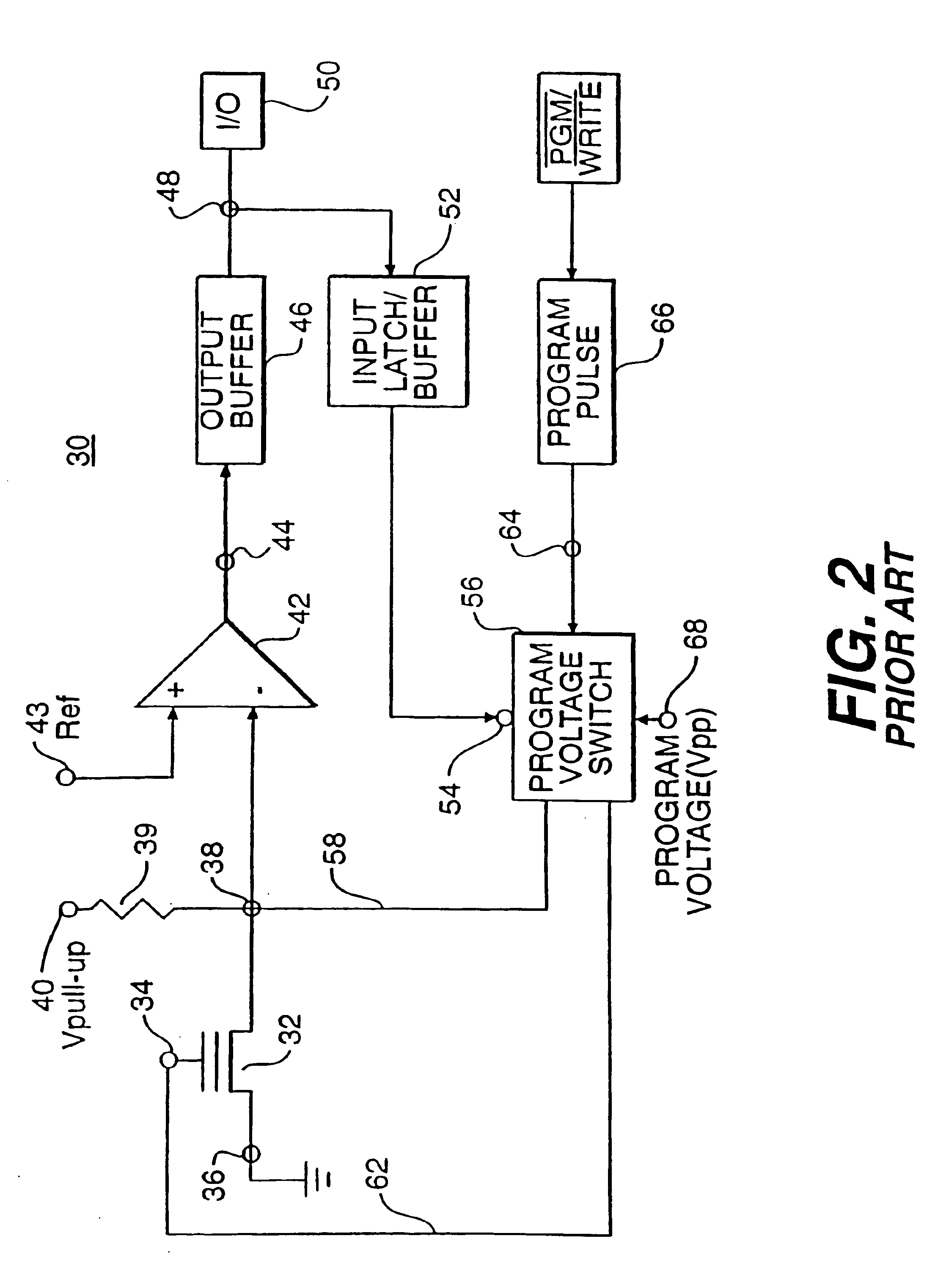Memory apparatus including programmable non-volatile multi-bit memory cell, and apparatus and method for demarcating memory states of the cell
a memory apparatus and multi-bit technology, applied in the field of memory apparatus including programmable non-volatile multi-bit memory cells, can solve the problems of readout errors, substantially limited programming speed (total time to program a cell to a target state), and error upon subsequent readout of the cell, so as to achieve stable relationship, improve programming consistency, and high accuracy
- Summary
- Abstract
- Description
- Claims
- Application Information
AI Technical Summary
Benefits of technology
Problems solved by technology
Method used
Image
Examples
Embodiment Construction
[0050]The invention will now be described in detail in relation to several preferred embodiments illustrated in the accompanying drawings. Of course, it will be understood that the illustrative embodiments are merely exemplary and that the scope of the present invention, as defined in the appended claims, encompasses a wide range of alternatives, modifications and equivalents, which may be implemented consistent with the basic principles described herein.
[0051]Generally speaking, the invention described herein allows multiple bits of information to be efficiently and reliably stored in and read from an electrically alterable non-volatile memory (EANVM). In the preferred practice of the invention, this is accomplished by electrically varying the conductivity of the channel of a floating gate FET to be within any one of Kn conductivity ranges, where “K” represents the base of the numbering system being employed (in a binary system, K=2) and n is the number of bits stored per cell (n ≧...
PUM
 Login to View More
Login to View More Abstract
Description
Claims
Application Information
 Login to View More
Login to View More - R&D
- Intellectual Property
- Life Sciences
- Materials
- Tech Scout
- Unparalleled Data Quality
- Higher Quality Content
- 60% Fewer Hallucinations
Browse by: Latest US Patents, China's latest patents, Technical Efficacy Thesaurus, Application Domain, Technology Topic, Popular Technical Reports.
© 2025 PatSnap. All rights reserved.Legal|Privacy policy|Modern Slavery Act Transparency Statement|Sitemap|About US| Contact US: help@patsnap.com



